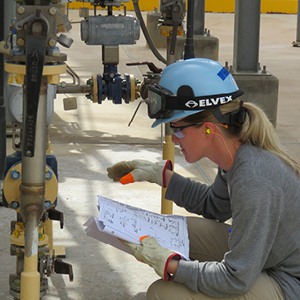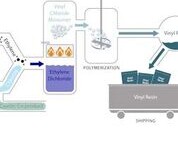
Vinyl Production
Complex Chemistry Based on Common Salt
Like all plastic materials, PVC/vinyl results from a series of processing steps that convert hydrocarbon-based raw materials (petroleum, natural gas or coal) into unique synthetic products called polymers. The vinyl polymer is unusual, however, because it is based only in part on hydrocarbon feedstocks: ethylene obtained by processing, or cracking, natural gas or petroleum. The other half of the vinyl polymer is based on the natural element chlorine.
Chlorine gives vinyl two advantages. First, chlorine is derived from brine — a solution of common salt and water, and a readily available, inexpensive commodity. Thus, vinyl is less sensitive to fluctuations in the world oil market than are totally oil dependent polymers.
Second, chlorine has excellent inherent flame retardant properties. These properties are passed on directly to vinyl end-products, making vinyl an excellent choice for applications such as electrical conduit and wiring that require high resistance to ignition and flame spread.
From Monomer to Polymer Product
Through a chemical reaction, ethylene and chlorine combine to form ethylene dichloride which, in turn, is transformed into a gas called vinyl chloride monomer (VCM). The next step, called “polymerization,” converts the monomer into vinyl polymer, a fine-grained, white powder or resin known as polyvinyl chloride (PVC), or simply “vinyl.”
Additives and Modifiers
Before PVC resin can become a useful material it is combined with additives and modifiers to make many different kinds of products. What’s added to the PVC resin depends on the performance needs of a particular product. For example if you are manufacturing vinyl siding, you look at adding an impact modifier or stabilizer (so it doesn’t bend or dent), pigment (for a color), UV modifier (so the color wont fade), etc. Different products require different additives and modifiers which are determined by the intended use and performance requirements of a finished product.
Elimination of Certain Heavy Metal Stabilizers
The invention of alternative stabilization technology phased down the need for stabilizers that contain lead and cadmium. This technology was commercialized and has been used in the United States and Canada for the past three decades in rigid vinyl, and for more than 15 years in flexible vinyl. In addition, U.S. vinyl products manufacturers have led the way on this stewardship effort on a global basis.




